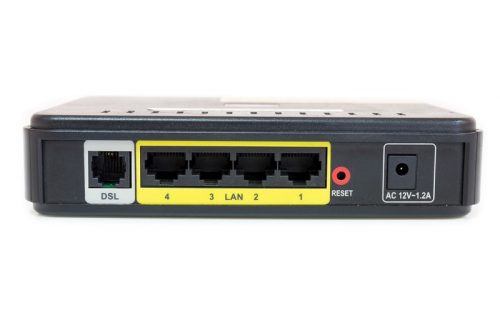How to hack Wi-Fi passwords

It happens more often than you think. So you had your resident household tech guru set up your home Wi-Fi router and your gadgets that connect to it. He jots down the Wi-Fi password on a little Post-it note, which you immediately lose, of course.
Your gadgets save the Wi-Fi password and connect automatically when they’re in range. So far, so good. Everything works as it should, every day, that is… until it doesn’t.
With the password note now long gone and your tech guru nowhere to be found, how can you retrieve or reset your Wi-Fi password and connect to your network again?
Well, at this point, you can try these tips, ranging from the easy to the advanced, to get you and your gadgets up and running again.
Note: Just a friendly reminder. These tips are only meant to be used on Wi-Fi routers and networks that you own or authorized to manage. Please don’t go around cracking other people’s networks.
1. Command prompts
This first technique will only work if your computer has already joined a Wi-Fi network in the past. This will not crack nor decipher passwords of unsaved Wi-Fi access points.
On Windows, open a command prompt window. Do this by typing ‘cmd’ on the search bar and right-click on the best match, which should be “Command Prompt,” then select “Run as administrator.”
Select “Yes” on the User Account Control window that appears and a black window with white text will be displayed next. This is called the Command Prompt.
Now, in this window, after the text “C:WINDOWSsystem32” (your cursor should already be in the right position), type this command:
netsh wlan show profile
Hit enter.
The window will then display “User profiles.” This will list all the Wi-Fi networks your computer has joined in the past. From this list, copy the Wi-Fi network name you want to retrieve the password from (for example, “Komando Wi-Fi”).
Next, in the same Command Prompt window, type this but replace the asterisks with the Wi-Fi network name you copied:
netsh wlan show profile name=”*********” key=clear
It will look like this with our example:
netsh wlan show profile name=”Komando Wi-Fi” key=clear
Press enter and a bunch of new text will show up in the same window. The saved password for the selected Wi-Fi network will be displayed under “Security Settings” as “Key Content.”
Jot it down and you’re set to rejoin.
Note: You can also retrieve saved Windows Wi-Fi passwords with a free tool from Nirsoft called WirelessKeyView.
Here’s a video tutorial to help you out:
For Macs, there’s a similar command. Open a Terminal window by searching for it. (You can also find it in the “Other” folder on your Mac’s Launchpad.)
Terminal is macOS’s version of Command Prompt but it appears as a white window with black text by default.
On this Terminal window, type this but again, replace the asterisks with the Wi-Fi network name:
security find-generic-password -wa “*********”
Press enter and the saved password will be displayed.
2. Reset your router to factory settings

Now, the previous tip will only work for saved Wi-Fi networks but what if you have a new gadget and your old computers are no longer available? Maybe you have moved to another house or you’re trying to set up a new computer?
In this case, you might need to reset your Wi-Fi router and wipe it clean.
Almost every Wi-Fi router has a little pinhole for accessing a reset button. Take a paperclip or a pen then push the button for around 15 seconds and your router will be back to its factory settings, wiping out any user settings it has been configured with.
If the router is successfully reset, you will have to set it up again like it’s new. Download your router’s mobile app and set it up by pairing the app with the router.
You can also connect a computer via Ethernet cable then download the router’s management software or point a web browser to the router’s default IP address to access its administrator interface.
Common IP addresses for popular routers are 192.168.1.1 for Linksys and D-Link, 192.168.0.1 for Netgear, or 192.168.2.1 for Belkin. If you’re having trouble finding your router’s IP, consult your user manual or you can check online for lists such as routeripaddress.com.
Once you’re on the router administrator page, you will have to enter a username and password to log in. Since your router is back to its factory settings, you will need the default username and password assigned by the manufacturer for your particular model. Click here for the link you need to find just about any router’s username and password.
Once in, you can now set up your Wi-Fi network name and Wi-Fi security password again. While you’re at it, please change your router’s default username and password for obvious security reasons.
Try to remember your Wi-Fi password this time and if you’ve decided to jot it down again, please keep that Post-It note in a safe place.
3. Crack the password with software tools
As we always recommend, please do not use WEP security on your Wi-Fi network. Why? Because it’s really simple to crack.
With a bit of patience and command line knowledge, you can crack WEP passwords with ease by using free Linux tools like BackTrack.
It is also possible with more secure WPA and WPA2 networks with this free and open-source tool called Reaver.
Reaver can work in conjunction with BackTrack but it will go beyond WEP passwords and will attempt to crack WPA and WPA 2 passwords as well. Again, it takes Linux skills, command line knowledge, technical proficiency and patience to use Reaver.
Also, these cracking tools do not work with all routers and Reaver will not work if you turn off Wi-Fi Protected Setup (WPS).
WPS is a built-in feature in most routers that lets supported devices connect to a network automatically. If you are worried about Reaver attacks on your home network, it’s recommended that you turn off your router’s WPS feature.
For a complete Wi-Fi penetration testing tool, check out Kali Linux at Kali Tools.
Massive Attack: One thing your router needs now to keep hackers out
There’s one thing that router manufacturers don’t tell you but it’s one essential thing that can keep hackers at bay. Click here and I’ll tell you what it is.
Tags: hackers, security, web browser, YouTube
